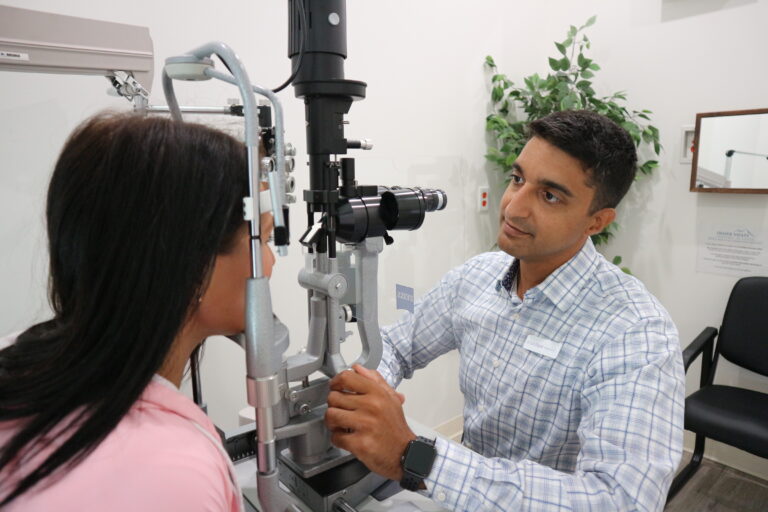Understanding Floaters: Causes and Treatment
Introduction
Have you ever noticed tiny, drifting specks, spots or cobweb-like shapes in your field of vision? These visual disturbances are commonly known as floaters, and while they are usually harmless, they can also be warning signs of severe issues. Understanding their causes and potential treatments can help ease concerns and ensure optimal eye health.
What is a Floater?
Floaters are small, dark specks or transparent threads that appear to float in your field of vision as your eye moves. They are more noticeable when looking at a bright, uniform background, such as a clear sky or a blank wall. These visual disturbances are not on the surface of your eyes but rather inside the vitreous, a gel-like substance that fills the back portion of the eye. The vitreous gel is mostly a clear protein matrix and helps maintain the eye’s shape.
Causes of Floaters
- Age-Related Changes: One of the most common causes of floaters is age-related changes in the vitreous. As you age, the vitreous gel may shrink and become more liquid, leading to the formation of small, stringy clumps or strands of protein/collagen.
- Posterior Vitreous Detachment (PVD): PVD occurs when the vitreous gel pulls away from the retina, the light-sensitive layer at the back of the eye. This separation can cause floaters to become more noticeable. While PVD is a natural part of aging, it can also be more associated with conditions like nearsightedness, inflammation, or trauma.
- Eye Inflammation or Bleeding: Inflammatory conditions, infections, or bleeding in the eye can result in the formation of floaters. Conditions like uveitis or diabetic retinopathy may contribute to the formation of these visual disturbances.
- Retinal Tears or Detachment: Rarely tears or detachment of the retina can cause floaters, accompanied by flashes of light and possible visual loss. This is an emergent condition that requires immediate medical attention to prevent vision loss.
Treatment Options
While floaters are often harmless and may fade or become less bothersome over time initially they are very bothersome as there is no specific medication or eye drop to eliminate them. However, in cases where floaters significantly impair vision or are associated with other eye conditions, medical interventions may be considered:
- Vitrectomy: This surgical procedure involves removing the vitreous gel along with the floaters and replacing it with a clear saline solution. Vitrectomy is typically reserved for severe cases and carries some risks, including retinal detachment and infection.
- Vitreolysis Laser Therapy: YAG laser therapy can be done in the clinic and is used to break up large or persistent floaters. This non-invasive procedure involves using laser energy to target and break down the floaters into smaller ones. However, this treatment is not suitable for all types of floaters.
Conclusion
Floaters are a common and usually benign occurrence, often associated with the natural aging process of the eyes. While they can be bothersome, particularly when they suddenly appear or increase in number, most floaters do not require medical intervention. However, it’s crucial to recognize when floaters may indicate a more serious retinal condition and seek prompt medical attention. Regular eye exams and adopting a healthy lifestyle can go a long way in preserving your vision and maintaining optimal eye health and reducing mental strength about lasers.
Fraser Valley Cataract and Laser provides Vitreolysis Laser Therapy. Call us to to book your consultation (604) 372-3937 or email us at info@fvcl.com







